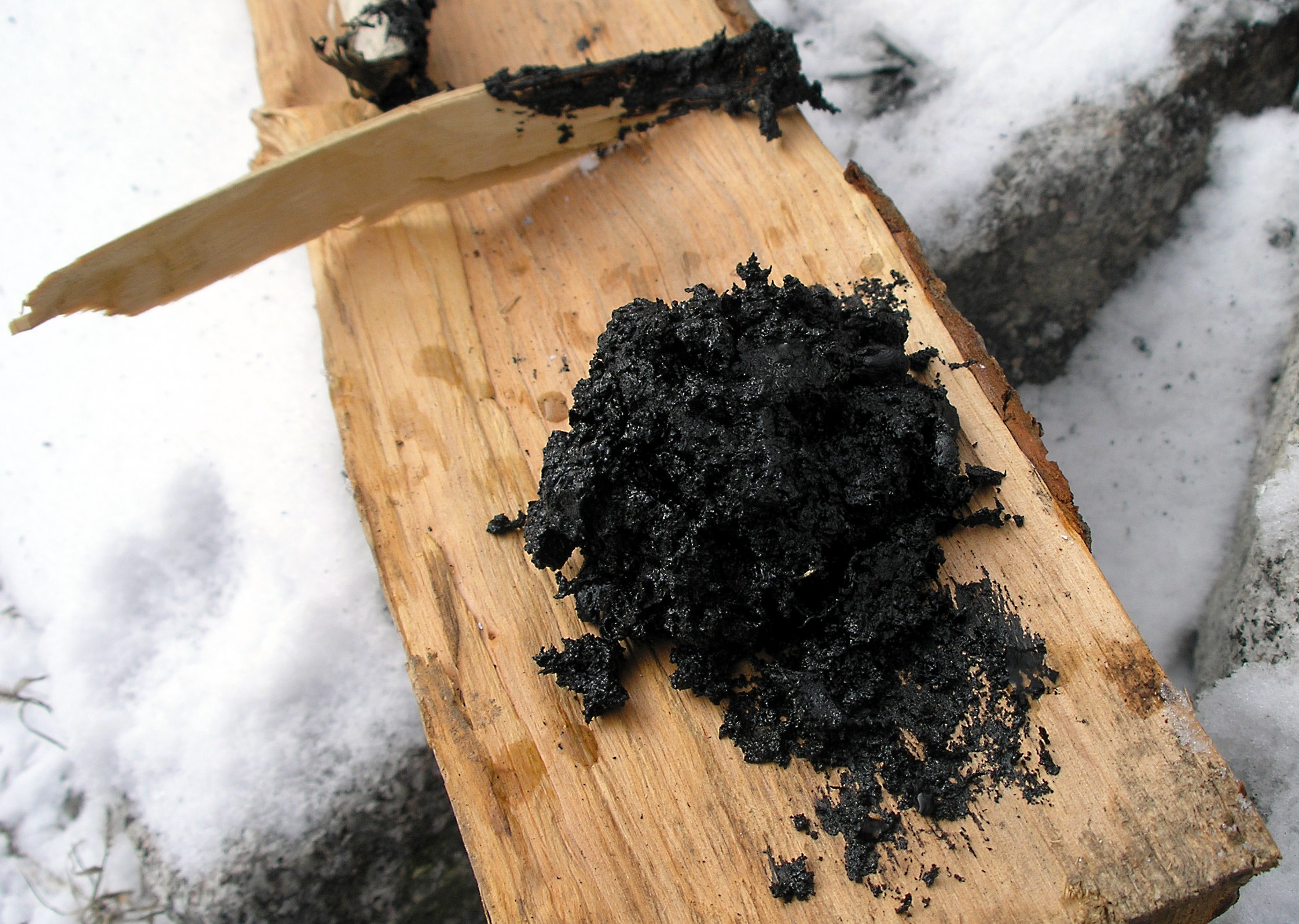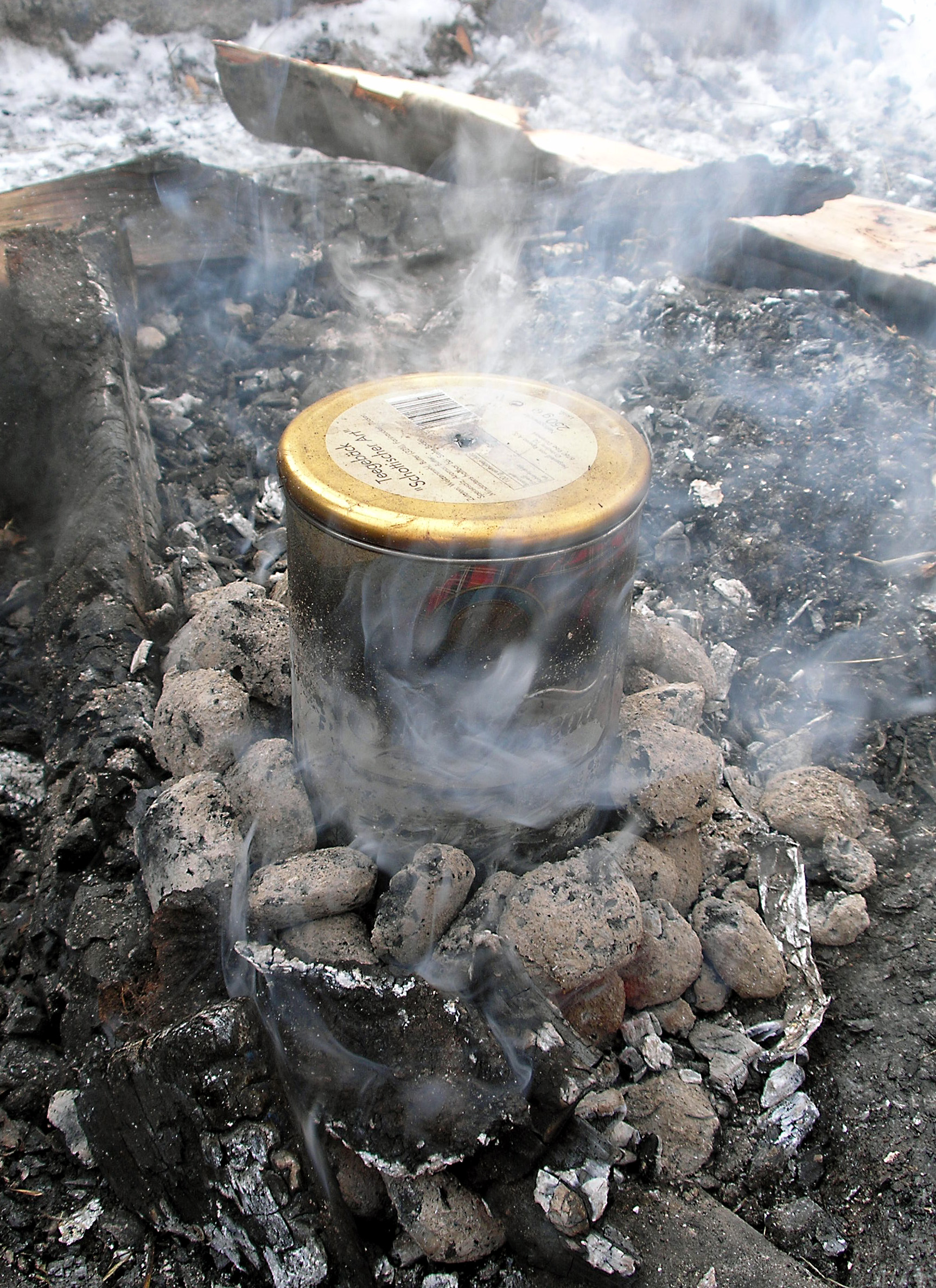birch bark tar on:
[Wikipedia]
[Google]
[Amazon]

 Birch
Birch
"Birch Tar Oil A Powerful Antiseptic"
''OtzisPouch'', 2020-04-01 owing to a large amount of phenol derivatives and terpenoid derivatives. Birch tar oil was used in the 18th Century alongside civet and
Non-video demonstrationTreating Leather With Birch Tar
Adhesives Non-timber forest products {{material-stub
tar
Tar is a dark brown or black viscous liquid of hydrocarbons and free carbon, obtained from a wide variety of organic materials through destructive distillation. Tar can be produced from coal, wood, petroleum, or peat. "a dark brown or black bit ...
or birch pitch is a substance (liquid when heated) derived from the dry distillation of the bark of the birch
A birch is a thin-leaved deciduous hardwood tree of the genus ''Betula'' (), in the family Betulaceae, which also includes alders, hazels, and hornbeams. It is closely related to the beech-oak family Fagaceae. The genus ''Betula'' contains 30 ...
tree.
Compounds
It is composed of phenols such as guaiacol,cresol
Cresols (also hydroxytoluene or cresylic acid) are a group of aromatic organic compounds. They are widely-occurring phenols (sometimes called ''phenolics'') which may be either natural or manufactured. They are also categorized as methylphenols. ...
, xylenol
Xylenols are organic compounds with the formula (CH3)2C6H3OH. They are volatile colorless solids or oily liquids. They are derivatives of phenol with two methyl groups at various positions relative to the hydroxyl group. Six isomers exist, of whi ...
, and creosol
Creosol is a chemical compound with the molecular formula C8H10O2. It is one of the components of creosote. Compared with phenol, creosol is a less toxic disinfectant.
Sources
Sources of creosol include:
* Coal tar creosote
* Wood creosote
* ...
.
Ancient and modern uses
Birch tar was used widely as anadhesive
Adhesive, also known as glue, cement, mucilage, or paste, is any non-metallic substance applied to one or both surfaces of two separate items that binds them together and resists their separation.
The use of adhesives offers certain advant ...
as early as the Middle Paleolithic
The Paleolithic or Palaeolithic (), also called the Old Stone Age (from Greek: παλαιός ''palaios'', "old" and λίθος ''lithos'', "stone"), is a period in human prehistory that is distinguished by the original development of stone too ...
to early Mesolithic
The Mesolithic (Greek: μέσος, ''mesos'' 'middle' + λίθος, ''lithos'' 'stone') or Middle Stone Age is the Old World archaeological period between the Upper Paleolithic and the Neolithic. The term Epipaleolithic is often used synonymous ...
era. Neanderthals
Neanderthals (, also ''Homo neanderthalensis'' and erroneously ''Homo sapiens neanderthalensis''), also written as Neandertals, are an Extinction, extinct species or subspecies of archaic humans who lived in Eurasia until about 40,000 years ag ...
produced tar through the dry distillation of birch bark
Birch bark or birchbark is the bark of several Eurasian and North American birch trees of the genus ''Betula''.
The strong and water-resistant cardboard-like bark can be easily cut, bent, and sewn, which has made it a valuable building, crafti ...
as early as 200,000 years ago. A study from 2019 showed that birch tar production can be a very simple process, merely involving the burning of birch bark near smooth vertical surfaces in open air conditions. A rare find from the Dutch North Sea shows that Neanderthals used birch bark tar as a backing on small 'domestic' stone tools.
Birch tar also has been used as a disinfectant
A disinfectant is a chemical substance or compound used to inactivate or destroy microorganisms on inert surfaces. Disinfection does not necessarily kill all microorganisms, especially resistant bacterial spores; it is less effective than st ...
, in leather
Leather is a strong, flexible and durable material obtained from the tanning, or chemical treatment, of animal skins and hides to prevent decay. The most common leathers come from cattle, sheep, goats, equine animals, buffalo, pigs and hogs, ...
dressing, and in medicine.
5,000-year-old chewing gum made from birch bark tar and still bearing tooth imprints, has been found in Kierikki in Finland. Genetic material retained in the gum has enabled novel research regarding population movements, the types of foods consumed, and the types of bacteria found on their teeth.
A different chewing gum sample, dated to 5,700 years old, was found in southern Denmark
)
, song = ( en, "King Christian stood by the lofty mast")
, song_type = National and royal anthem
, image_map = EU-Denmark.svg
, map_caption =
, subdivision_type = Sovereign state
, subdivision_name = Danish Realm, Kingdom of Denmark
...
. A complete human genome and oral microbiome
A microbiome () is the community of microorganisms that can usually be found living together in any given habitat. It was defined more precisely in 1988 by Whipps ''et al.'' as "a characteristic microbial community occupying a reasonably well ...
was sequenced from the chewed birch pitch. Researchers identified that the individual who chewed the pitch was a female closely related genetically to hunter-gatherers from mainland Europe.
Ends of fletching of arrow
An arrow is a fin-stabilized projectile launched by a bow. A typical arrow usually consists of a long, stiff, straight shaft with a weighty (and usually sharp and pointed) arrowhead attached to the front end, multiple fin-like stabilizers c ...
s were fastened with birch-tar and birch-tar-and- rawhide lashings were used to fix the blade of axes in the Mesolithic period.
Russia leather Russia leather is a particular form of bark-tanned cow leather. It is distinguished from other types of leather by a processing step that takes place after tanning, where birch oil is worked into the rear face of the leather. This produces a leather ...
is a water-resistant leather, oiled with birch oil after tanning. This leather was a major export good from seventeenth and eighteenth century Russia, as the availability of birch oil limited its geographical production. The oil impregnation also deterred insect attack and gave a distinctive and pleasant aroma that was seen as a mark of quality in leather.
Birch tar is also one of the components of Vishnevsky liniment
Vishnevsky liniment or balsamic liniment (, ) is a topical medication which has been used to treat wounds, burns, skin ulcers and suppurations. Developed by Russian surgeon Alexander Vishnevsky in 1927, the liniment contains birch tar, xerofo ...
.
Birch tar oil is an effective repellent of gastropod
The gastropods (), commonly known as snails and slugs, belong to a large taxonomic class of invertebrates within the phylum Mollusca called Gastropoda ().
This class comprises snails and slugs from saltwater, from freshwater, and from land. T ...
s. The repellent effect lasts about two weeks. The repellent effect of birch tar oil mixed with petroleum jelly
Petroleum jelly, petrolatum, white petrolatum, soft paraffin, or multi-hydrocarbon, CAS number 8009-03-8, is a semi-solid mixture of hydrocarbons (with carbon numbers mainly higher than 25), originally promoted as a topical ointment for its h ...
applied to a fence lasts up to several months.
Birch tar oil has strong antiseptic properties Wanamaker, L"Birch Tar Oil A Powerful Antiseptic"
''OtzisPouch'', 2020-04-01 owing to a large amount of phenol derivatives and terpenoid derivatives. Birch tar oil was used in the 18th Century alongside civet and
castoreum
Castoreum is a yellowish exudate from the castor sacs of mature beavers. Beavers use castoreum in combination with urine to scent mark their territory. Both beaver sexes have a pair of castor sacs and a pair of anal glands, located in two cavities ...
and many other aromatic substances to scent the fine Spanish leather Peau d'Espagne. At the turn of the 20th Century, birch tar has become a specialty fragrance material in perfumery
Perfume (, ; french: parfum) is a mixture of fragrant essential oils or aroma compounds (fragrances), fixatives and solvents, usually in liquid form, used to give the human body, animals, food, objects, and living-spaces an agreeable scent. Th ...
as a base note to impart a leathery, smoky note in fragrances, especially from the leather and tobacco genre, and to a lesser extent in Chypres
Chypre ( or ) is the name of a family (or ''concept'') of perfumes that are characterised by an accord composed of citrus top notes, a middle centered on cistus labdanum, and a mossy-animalic set of basenotes derived from oakmoss. Chypre perfumes ...
, especially Cuir de Russie
Cuir de Russie () is a fragrance from Parisian couturier Gabrielle "Coco" Chanel. (The term may also refer to other Russia leather perfumes, most notably ''Creed Cuir de Russie''.)
History
Coco Chanel had worked with Ernest Beaux on her origina ...
perfumes and fragrance bases, typically together with castoreum and isobutyl quinoline. It is used as an ingredient in some soaps, i.e. the scent of Imperial Leather soap, though other tars (i.e. from pine, coal) with an equally phenolic and smoky odour are more commonly used in soaps as a medicating agent.
References
External links
Non-video demonstration
Adhesives Non-timber forest products {{material-stub